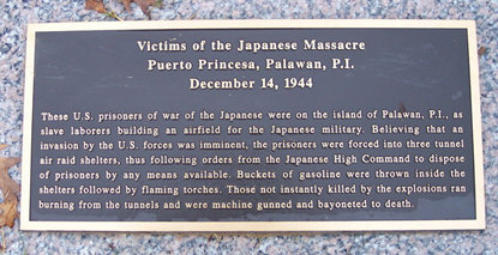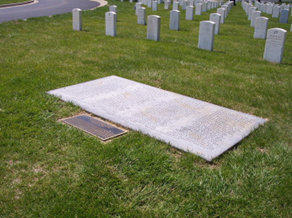
copyright © Wartime Heritage Association
Website hosting courtesy of Register.com - a web.com company
Wartime Heritage
ASSOCIATION

Remembering World War II
Kenneth Leaman Lewis

Name:
Kenneth Leaman Lewis
Rank:
Private First Class
Service Number:
11007542
Service:
C Battery, 60th Coast Artillery Regiment (Anti Aircraft),
Harbor Defenses of Manila and Subic Bays, US Army
Date of Birth:
October 31, 1919
Place of Birth:
Sackville, Westmorland Co., New Brunswick
Date of Enlistment:
August 6, 1940
Place of Enlistment:
Boston, Massachusetts
Age at Enlistment:
20
Address at Enlistment:
Bristol, Massachusetts
Occupation:
Clay production industry
Marital Status:
Single
Date of Death:
December 14, 1944
Age:
25
Cemetery:
Jefferson Barracks National Cemetery, Lemay, St. Louis County, Missouri
Grave:
Section 85
Kenneth Leaman Lewis was the son of Helena Louise "Lena" (McDonald) Lewis (1893–1955) and Cecil Reuben
Lewis (1891-1968). His mother was born in Amherst, Cumberland County, Nova Scotia. His father was born in
Point de Bute, Westmorland Co., New Brunswick. Kenneth had four siblings, Margaret L. (Lewis) Renaud
(1914–2002), Edward Cecil Lewis (1915–1979), Vernon Joseph Lewis (1919–1982), and Harry Maurice Lewis
(1922–1997).
Private First Class Kenneth Lewis served with Battery ‘C’ of the US Army’s 60th Coast Artillery Regiment in the
Philippines and was take prisoner with the capture of the Philippines in May of 1942. He remained a POW until
his death during the Palawan Massacre (or the Puerto Princesa Massacre) on December 14, 1944, at the
Palawan Prison Camp No. 10A in Puerto Princesa, a coastal city in the Mimaropa region of the Philippines on
Palawan Island.
In order to prevent the rescue of prisoners of war by the advancing Allies, on December 14, 1944, the
Japanese herded the remaining 150 POWs at Puerto Princesa into three covered trenches which were then set
on fire using barrels of gasoline.
As prisoners tried to escape the flames they were shot down. Some escaped by going over a cliff that ran along
one side of the trenches, but were later hunted down and killed. Only 11 men escaped the slaughter and
between 133 and 141 were killed. The site of the massacre can still be visited. The massacre is the premise of
the 2004 published book "Last Man Out: Glenn McDole, USMC, Survivor of the Palawan Massacre in World War
II" by Bob Wilbanks. The opening scenes of the 2005 movie, "The Great Raid", also present the massacre and
its brutality.
Because 11 men survived the massacre to confirm the ordeal, American military leaders realized the imminent
threat to other POWs and detainees. Senior commanders were determined to prevent more atrocities. With
several thousand American and Allied lives at stake, the rescue of POWs and internees became a high priority.
After the overwhelming success of the Cabanatuan rescue, three more raids were done in short succession.
The Cabanatuan Raid took place on January 30, 1945, freeing over 500 Americans during the liberation of the
camp, with the loss of 2 American and 21 Filipino guerilla soldiers. Additional successful raids included the raid
at Santo Tomas Internment Camp on February 3, 1945, the raid of Bilibid Prison on February 4, 1945, and the
raid at Los Baños on February 23, 1945. Combined, these raids freed over 7,000 POWs and detainees in less
than a month.
Kenneth was initially buried the Philippines, and his remains
were received from Leyte in the Philippines and re-interred
February 14, 1952, in a group burial with other another 122
American victims of the Palawan Massacre at the Jefferson
Barracks National Cemetery in Missouri. Located in Section 85
of the cemetery, the mass grave is the largest in the cemetery.






- World War I - Menu
- WWI Stories and Articles
- Photos - Yarmouth Soldiers
- Selection of World War I Songs
- WWI Casualties of Yarmouth, NS
- Those Who Served - Yarmouth, NS
- WWI Casualties Digby Co. NS
- WWI Casualties Shelburne Co. NS
- Merchant Mariners (1915) Yarmouth, NS
- Canadian Forestry Corps - Non Yarmouth Birth/Residence Enlistments
- US Draft Registry - Yarmouth NS Born


- World War II - Menu
- WWII Stories and Articles
- Telegraphist Air Gunners
- WWII Casualties of Nova Scotia
- US Casualties with NS Connection
- Far East/Pacific Casualties with NS Connection
- Merchant Navy Casualties Nova Scotia
- Nova Scotia WWII Casualties Holten Canadian War Cemetery
- D-Day Casualties - Nova Scotia
- CANLOAN Program Casualties - Nova Scotia
- Battle of the Bulge Casualties - Nova Scotia
- WWII Casualties Yarmouth NS
- Yarmouth Casualties - RCAF RAF Canadian Army WWII
- Yarmouth Co., Marriages WWII
- Casualties Non-Born/Residents with Connection to Yarmouth Co., Nova Scotia.
- WWII Casualties Digby Co., NS
- Non-Nova Scotian WWII Casualties Buried in Nova Scotia
- WWII RCAF Casualties Aged 16-18
- Brothers/Sisters Who Served - World War II













